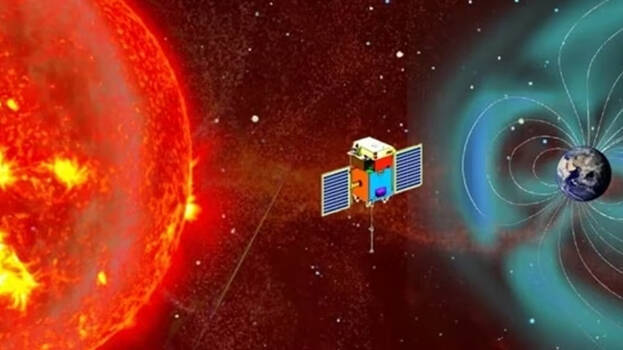

ISRO has successfully placed the Aditya L1 solar probe into the three-dimensional halo orbit around Lagrange Point 1. This is a proud moment in India's history. Congratulations to the ISRO scientists who achieved success in their maiden mission to study the Sun. Only NASA and the European Space Agency have landed probes at Lagrange before. This is also a technological success that cements India's position in solar exploration. This is a continuation of the feats the country has been achieving in various fields. Prime Minister Narendra Modi termed the success of Aditya as another milestone in the history of the nation's achievements.
Launched on September 2, Aditya travelled 127 days to reach its destination 15 lakh km away. It travelled a total of 37 lakh kilometres, including the rotation around the earth. It was put into orbit around the imaginary point called Lagrange Point 1 through a complex control process at around 4:00 pm yesterday. Scientists at Bengaluru's ISTRAC achieved the target by firing the liquid apogee motor and twelve thrusters intermittently. Scientists from NASA and the European Space Agency also helped.
The cost of Aditya, which has a lifetime of 5 years, was built for just Rs 400 crores. The orbit around L1, known as a halo orbit, is a three-dimensional path with specific parameters: 2 lakh km along the Sun-Earth line, 7 lakh km perpendicular to this line, and 1 lakh km perpendicular to the orbital plane of Earth around the Sun. The Lagrange point is also relative as the Earth revolves around the Sun. The three-dimensional self-rotating spacecraft will orbit the Sun at the same speed as the Earth at the Lagrange point, where the gravitational forces of the Earth and the Sun are balanced. Therefore, Aditya will face the Sun at all times without any eclipse shadow or other obstructions.
This solar observatory of India will act as a weather observatory in space. It will monitor changes such as sunburn, radiation, magnetic effect, density, speed and direction of the solar wind which affect the Earth's climate. There are seven learning tools for this.
Aditya has global relevance as space climate studies is an international topic. This is a mission that benefits all mankind. Aditya is a testament to India's use of science to benefit the world. Data from this and 3D images of the Sun's internal changes can help predict storms and climate changes on Earth. Precautions can be taken against solar winds, which are magnetic bursts that can affect power and communication networks. There are 7,800 satellites in space, including 50 Indian satellites worth Rs 50,000 crore. Solar winds can damage satellites' electronics. Upon receiving Aditya's warning, satellites can be protected by putting electronic devices in safe mode.
After the resounding success of Chandayan 3, ISRO is turning everything it touches into gold. It successfully tested nuclear power and artificial intelligence in Chandrayaan 3. Following this, it launched Aditya and XPoSat. It was able to generate electricity in fuel cells in space. Many missions are in the pipeline, including the manned mission Gaganyaan. ISRO, which is making huge gains through low-cost commercial launches, is raising the country's prestige by becoming the world's leading space agency.